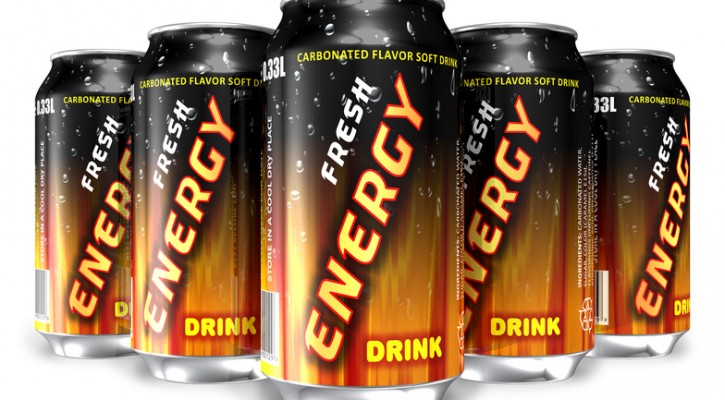Tag Archive: drowsy driving

The Effects of Energy Drinks and Driving
December 11, 2009
There are many common misconceptions about energy drinks. Since they are marketed as supplements (and often times sold in health food stores), many people assume they are healthy. Or at the very least they assume energy drinks are not unhealthy. However, energy drinks are more harmful than many people realize. The FDA regulates how much caffeine a company can put in its soft drinks. A 12 ounce soft drink may have no more than 71 mgs of caffeine. However, many energy drink makers have found a way around these restrictions. By marketing their products as supplements, instead of soft drinks they are able to put as much caffeine as they wish into their drinks. Some energy drinks on the market have over double the amount of caffeine the FDA allows in soft drinks.
Ingesting such high amounts of caffeine causes people to go into an altered state, known as caffeine intoxication. Many characteristics of caffeine intoxication are similar to the characteristics of alcohol intoxication. People experiencing caffeine intoxication experience twitching muscles, increased irritability, and slurred speech. Additionally, people who drink energy drinks often become more willing to take risks and are more likely to become distracted. It is a recipe for disaster when a distracted, irritable person who is likely to take risks gets behind the wheel of a car.
When a person uses energy drinks to compensate for missing a good night’s sleep it becomes far more dangerous. Caffeine cannot compensate for the mental and physical alertness that a person gets from a full night of sleep. For a short time caffeine may seemingly do the trick. The effects of the caffeine in energy drinks may help mask a driver’s fatigue for a short while. However, when the effects begin to wear off drivers become increasingly more fatigued and their reaction times and ability to concentrate suffer greatly. Many people describe a crashing effect and they become more acutely aware of their mental and physical fatigue. This feeling is commonly referred to as crashing, which can be likened to the hangover people have the day after a long night of drinking.
Instead of turning to caffeine drinks for artificial energy people preparing to go on a long drive should get a full night of sleep. Additionally, they should take frequent stretch breaks, stay hydrated and take power naps if needed to ensure they are mentally and physically alert on the road.
Read more driver safety tips and dangers related to energy drinks at National Safety Commissions Driver Alerts Blog.

Teens and Nighttime Single Vehicle Crashes
November 16, 2009
As you read the daily news, a familiar pattern begins to occur. You begin to notice the car crashes that happen at night with only one vehicle involved. Many times, these crashes involve teen drivers.
Is it your imagination? No.
Many typical characteristics of teen crashes are:
- Teens are more likely than any other age group to be involved in a single vehicle crash. Among passenger vehicle drivers’ ages 16-19 involved in fatal crashes in 2008, 49 percent were involved in single-vehicle crashes. (Insurance Institute for Highway Safety)
- Nighttime fatal crash rates for 16 year olds are nearly twice as high as daytime rates. Centers for Disease Control and Prevention (CDC)
- In 2008, 37 percent of the 15- to 20-year-old male drivers who were involved in fatal crashes were speeding at the time of the crash.
Nighttime driving not only diminishes a driver’s visibility, but also their distance and speed perception, making it harder to judge a situation and respond quickly. Speeding decreases the time and space available to react and increases the severity of any injuries. Many times teenagers react too quickly and overcorrect or lose control of the vehicle, resulting in a single-vehicle crash. Drowsy driving is also more prevalent at night, and teens are especially vulnerable to fatigue and need additional sleep during this developmental time. In addition, other drivers on the road are more likely to be less attentive, drowsy or under the influence at night.
What can be done?
Create and enforce stricter Graduated Drivers Licensing (GDL) laws that give teens the privilege of driving but limit their exposure to higher risk situations encountered, by restricting nighttime driving, teen passengers and cell phone use. Experience behind the wheel is best gained in the daytime when accompanied by an experienced adult driver and under ideal driving conditions. GDL has proved successful in reducing crashes and fatalities among teen drivers as they progress to unrestricted driving at age 18.
Teens are ready to drive and need to be given the tools to drive safely. Understand the risk factors that young teen drivers face and place limits on driving privileges until they acquire the valuable experience needed to develop those tools safely.

Teens and Drowsy Driving
October 29, 2009
Does the morning alarm seem to come too early in the day? Do you catch yourself daydreaming or having trouble focusing throughout the day? Do you find yourself rubbing your eyes or yawning? You may be suffering from Sleep Deprivation.
Being sleep deprived has a cumulative effect. The National Sleep Foundation (NSF) recommends 8.5 to 9.5 hours of sleep for teens to be fully rested and notes that other professionals recommend higher amounts. The less sleep you have, the more deprived you are and it continues to add up during the week.
Reduced amounts of rest affect judgment, performance, information processing, emotions, and reaction time. All factors which are heavily relied upon for everyday functions and especially important when operating a vehicle. The National Highway Safety Transportation Association (NHSTA) estimates falling asleep at the wheel is responsible for at least 100,000 automobile crashes, 40,000 injuries, and 1,550 fatalities nationwide per year. They have identified young people as a high risk population for drowsy driving.
Teens typically have full schedules, academic and social pressures to balance. Their body clocks change during this developmental time, calling for them to stay up later at night and wanting to sleep in longer in the morning. When teens drive without sufficient amounts of sleep, they are even more vulnerable to the dangers teen drivers already face including:
- Distracted driving due to cell phones, texting, other passengers, adjusting music and eating or drinking
- Inexperience
- Impulsive behavior, including reckless driving, tailgating and speeding
- Lack of consistent seat belt use
- Reduced visibility at dawn, dusk or night
Other risks that increase drowsiness include:
- Colds, viruses and the flu
- Many prescription and over the counter medications
- Sleep apnea
- Alcohol consumption
NHSTA has identified late night, late afternoon and morning hours between six and eight a.m. as the hours teens are most tired and in the most jeopardy. Getting enough rest and avoiding high risk behaviors at specific times help to prevent drowsy driving. Also consider asking a passenger to stay alert and share the driving responsibility.
How can you over come driving drowsy? The National Sleep Foundation has the following suggestions:
- Watch for the warning signs of fatigue
- Stop driving-pull off at the next exit, rest area or find a place to sleep for the night
- Take a nap-find a safe place to take a 15 to 20-minute nap
- Consume caffeine-the equivalent of 2 cups of coffee can increase alertness for several hours
- Try consuming caffeine before taking a short
Be safe and get some rest.
Learn more at the National Sleep Foundation (NSF). The NSF has established November 2-8 as Drowsy Driving Prevention Week.
Driver Education: Driving with a Cold or the Flu
October 5, 2009
With cold and flu season here, many drivers are hurrying to drug stores and pharmacies for tissues, hand sanitizer, and over-the-counter medications to relieve symptoms such as sneezing, coughing, fever, and body aches. Unfortunately, alleviating cold and flu symptoms won’t necessarily make them safer drivers.
Colds are characterized by sore throat, sneezing and runny nose, and coughing.
Although many people have little to no fever with colds, these effects can be debilitating. Aside from the distraction these symptoms cause, drivers are often irritable due to their degree of discomfort and drowsy because the symptoms make it difficult to sleep well. This collection of problems can mean that these drivers take chances they wouldn’t ordinarily take, such as turning left in front of oncoming traffic or running red traffic lights, in an effort to get home quickly.
Flu symptoms commonly include coughing and body aches, often with a high fever and chills. In addition to feeling ill-tempered and sleepy, these drivers may also suffer from disorientation and dizziness. Driving effects could include slower reaction time, poor coordination, and impaired judgment.
In an effort to continue their normal activities, some drivers choose to take over-the-counter medications to ease their cold or flu symptoms. However, these medications do not typically eliminate symptoms. They also wear off quickly and can have side effects that compromise the user’s ability to drive safely, such as:
- Dizziness or lightheadedness
- Loss of muscle control and motor coordination
- Increased reaction time
- Jittery feelings and nervousness
- Drowsiness
It’s best to stay off the road when you have a cold or the flu. Seek support from family and friends by asking for a ride to the doctor’s office if you need to go and arranging carpools for your children; you can repay these favors when you’re feeling better. Getting plenty of rest is the best way for you to recover from the cold or flu quickly so you can safely get back on the road.
Driver Education: How Cough Medicine Affects Driving
July 16, 2009
Many parents who warn their teens repeatedly not to use illegal drugs are unaware of the temptation and risk posed by over-the-counter medications such as cough medicine. But cough medicine provides an inexpensive, easily accessible high to one out of 11 teens, according to the Partnership for a Drug-free America. And teens are often ignorant of or in denial about the risks posed by over-the-counter medicines which, they reason, are safe and legal. A 2008 Partnership Attitude Tracking Study indicated that only 45% of teens think taking cough medicine to get high is hazardous. Teens may not consider that though dextromethorphan (DXM) is safe to take in the recommended 15-to 30-milligram dose, they are likely to consume 360 milligrams or more in the effort to get high.
The effects of overdosing on DXM include:
- Confusion
- Impaired judgment
- Blurred vision
- Slurred speech
- Dizziness
- Nausea and vomiting
- Excessive sweating
- Loss of motor control
- Dissociative (out-of-body) sensations
- Paranoia
- Hallucinations
- Irregular heartbeat
- Loss of consciousness
- Seizures
- Brain damage
- Death
The situation becomes even more dangerous when teens abuse drugs they believe are safe and then get behind the wheel. To make matters worse, many teens who experiment with using cough medicine to get high do so when they are already under the influence of another drug, such as alcohol. This intensifies the effects, and, of course, makes driving riskier.
Information on how to abuse DXM is readily available on the internet and via teens’ friends, so parents must counteract it with information of their own – and with vigilance. Here are some tips for parents:
- Familiarize yourself with the basics of cough medicine abuse. Words to watch for (on your teen’s internet history) and listen for include Dex, DXM, Robo, Robo-ing, Robo- tripping, Skittles, Skittling, Syrup, Triple-C, and Tussin. DXM is found in syrups, lozenges, tablets, capsules, and gel caps labeled DM, cough suppressant, or tuss, or include the word “tuss” in the name.
- Include discussions about the risks of abusing over-the-counter drugs in your regular talks with your teen. Explain the difference between therapeutic dosages and overdosing, as well as the effects. Tell your teen that you want to know whenever they need to take any medication for any reason.
- Lock your medicine cabinet or keep medicines that contain DXM in a location that isn’t accessible to your teen. Keep track of how much medicine is in each container. Avoid buying multiples of medicines that contain DXM; doing so can be tempting to teens, and also makes it more difficult for you to keep track of the total amount of medicine in your household.
- Observe your teen, your teen’s bedroom and bathroom, and recreational areas carefully for medicinal smells and empty cough medicine containers.
